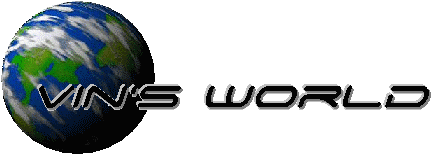I've attended a lot of Internet of Things (IoT) talks and webinars lately as it's one of the tech buzz words you'll need to know in 2015. While this is an emerging concept to the discussion as of late, the term itself has been around since 1999 and has been defined, redefined, coopted and usurped by many a vendor to flog their old product with new marketing material.
When it comes to technology marketing, I need three things:
- Vision - sweeping future statement (optionally includes rainbows and unicorns)
- Definition - what does the technology do
- Architecture - how does it do it
When any of the above are not well-defined, vendor slide decks start to look like Swiss cheese.
I think the IoT definition we can agree on is, "physical objects with electronics and software to enable connectivity to a network for the exchange of information with other connected objects." To simplify in marketing speak, "connecting lots of things to a network so they can talk with each other".
What is much more obscure at this point is the architecture behind IoT. So many talks - which I dismiss as marketing fluff - take the vision and build a use case that implies the architecture.
- "... everything from vending machines to thermostats to garage door openers will be able to communicate directly across the Internet to transform our lives."
- "... sensors in the concrete will detect [ice on the bridge] and communicate the information via the wireless internet to your car. Once your car knows there’s a hazard ahead, it will instruct the driver to slow down ..."
- When your car tire is running flat it will contact your auto manufacturer to signal and schedule a roadside replacement (where you'll be met by a driver-less A-AAA (Autonomous-American Automobile Association) tow truck for a robot replacement of your tire).
I have no problem with vision, but when it's presented as a use case by a vendor in lieu of the architecture, it dilutes any present real-world application and ingrains the buzz-wor-d/thiness of the technology. When I hear the "vision talk" and key in on statements presented in absolutes:
- IoT requires IPv6
- IoT will directly connect 50 billion devices by 2020
- IoT will provide automation of mundane daily tasks with Borg-like intelligence approaching Skynet-like self-awareness
...the talk is immediately identify as marketing material and in some cases F.U.D. to steer you towards the vendor solution to be presented in the upcoming slides.
Face (some overly simplified) facts, companies use technology to:
- stay on par with competition (everyone else is doing it, we need to keep up)
- gain competitive advantage (no one else is doing it, we can get ahead!)
No company will listen to a pitch, hear the "vision" is 5-10 years out and say, "OK, we'll wait." That's head-in-the-sand mentality. There is no pragmatic solution in terms of absolute statements against a far-off vision.
The biggest challenge I face in these conversations is bringing people back from the edge, talking them down off the vendor hype and helping them see reality. It's great to buy into the vision, but it also means there's very little you can do today in terms of products and deployment. If you understand the definition and architecture, a world of possibilities open within your existing deployments to make incremental and sometimes transformational steps towards the vision. This satisfies the "competitive advantage" point above while also staying within the ever-present constraint of "do-more-with-less" (read: automate, efficient, agile, <insert-buzz-word>, "don't cost me a lot of money!").




No comments :
Post a Comment